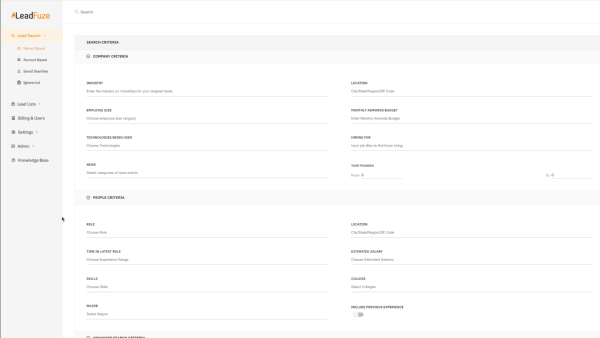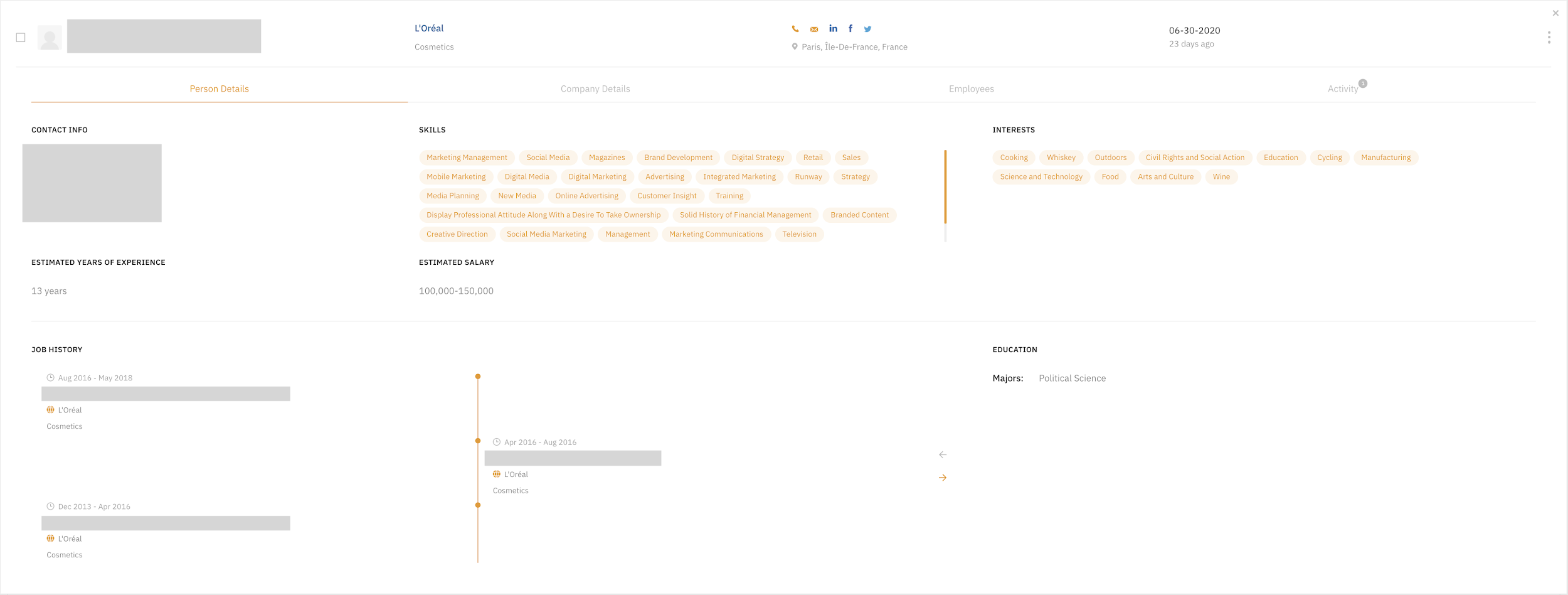And since your hiring process gives potential candidates their first taste of what it’ll be like working in your business, you need to make sure that you give them a great impression.
So, here are 10 of the top remote recruiting best practices you need to adapt to make sure that you find, hire, and get onboard the right talent in the New Normal.
10 Remote Recruiting Best Practices
1 Embrace a Diverse and Inclusive Work Culture
One of the top benefits of remote recruiting is that you’re no longer limited to the talent in your area. You can find and hire highly-skilled candidates anywhere in the world. That’s why companies with a diverse team outperform their competition by 35%.
Why companies with a diverse team outperform their competition by 35% Share on XOf course, that means that you’re going to end up with a team of people coming from different ethnic backgrounds with different beliefs.
More importantly, not all of them will be familiar with how you do business. This eventually can lead to miscommunication, resentment, and even frustration among your remote employees.
That’s why it’s a remote recruiting best practice to make sure that you first understand the culture of the people that you’ will be hiring.
Start by reading about their cultural and business practices. Ask other recruiters and hiring managers working in diverse and inclusive companies what to expect working with people from a specific region or country.
Doing these will help you build a diverse and inclusive work culture within your organization.
2 Set Expectations in Your Job Descriptions
When writing a job description for remote talent, it’s not enough to list down the responsibilities and skillsets they need to qualify for the job. You need to give them a clear picture of their regular workday when they get hired.
responsibilities and skillsets they need Share on XOne reason is that 35% of job seekers today haven’t experienced working remotely, so they don’t know what to expect.
On top of that, you need to be specific about what “remote working” means for your business.
Take this remote job description for a Communications Representative posted by Caterpillar, for example.
Even though the header says that it’s a remote position, the job description specifies that the candidate should live within the Central US region. By adding this additional piece of information, you can be sure that you won’t waste your time going through applications sent by candidates living in other parts of the country.
3 Optimize Your Careers Page for Search
According to Gallup’s State of the American Workplace, 77% of employees search online for job opportunities.
Optimizing your careers page by following SEO best practices that makes it easier for jobseekers to find and send in their applications.
This remote recruiting best practice helps you achieve two things:
First, it significantly decreases the time it takes to hire and fill a position within your company.
Second, it will ultimately save you approximately $454 each day you don’t find the right candidate.
Observe proper SEO strategies when optimizing your careers page. Consider adding keywords related to your current openings including specific job positions your candidates might be searching for. Use headings whenever possible to also help web crawlers understand the content of your site.
4Choose Your Job Interview Questions Carefully
It’s essential to stick to the basics when assessing your candidates’ skills. Whether or not you’re hiring remotely, consider the usual measure for recruiting the right candidate.
stick to the basics Share on XAssessment of how they accomplish work, deal with setbacks, relevant experiences, and personality traits are still useful factors.
Simultaneously, make sure that you carefully include interview questions about how they work remotely and what responsibilities they have at home. Because not everyone has fully transitioned to working remotely during the pandemic, getting an understanding of a candidate’s work attitude and work ethic during this time can help you weigh your decision.
5 Match Your Compensation Package with the Times
During the onboarding process, ensure that the benefits and compensation packages you’ll offer align with the New Normal’s needs. How your company provides security during this time can make potential candidates feel at ease.
Mercer surveyed over 600 respondents that reported 79% of companies went ahead with incentives and bonuses as planned. As financial situations are uncertain for many organizations, being transparent with the rationale behind new compensation and other pay decisions can help reduce anxieties.
Re-establishing incentives and payment strategies such as maintaining group health plans and applying for new financial legislations available in your country can help ameliorate the impact of cutting down on compensation.
6 Automate Your Recruiting and Onboarding Process
Today, 61% of companies expect their new hires to stay at least two years or more. And because a good onboarding program strengthens employee retention by 82%, automating your recruitment and onboarding process only makes sense in the new normal.
Primarily because onboarding is a month-to-year-long process, having it readily available online for new hires to access anytime is an excellent strategy to employ. Not all onboarding orientations have to be synchronous.
Be more creative with asynchronous methods like recording videos, upload presentations, or modules to help new hires acclimatize to your company’s culture even remotely.
The more time and effort invested in onboarding programs, the more engaged and supported your new employees feel.
7 Invest in the Right Tools
Investing in the right tools that help you seamlessly adapt to remote recruitment practices can save your business.
Using applications and platforms that let you keep track of applicant information, the status of recruitment, and total spending expenses not only keeps you organized but also helps save time on documentation.
For instance, computing for cost-per-hire while considering budget cuts within your company is essential. Using an expense tracking app like Freshbooks can help you efficiently keep a close eye on all expenses and financial allocations during recruitment. You’ll be able to save time on tax computation while keeping a close eye on how close or far you are within budget.
And of course, finding the right candidates can also be a tricky, time-consuming business. Instead, invest in services that will help you with the process, such as LeadFuze, for finding the best candidates for an open position using the best filtering and prospecting tools.

Once you’ve found your candidates, LeadFuze lets you save them so that you can monitor where each candidate is in the recruitment, interview, screening, and even hiring process.

8 Implement a Trial Stage
An excellent way to check if a potential hire fits your workplace culture is implementing a trial stage.
Trial periods can either last between 30 days to 180 days. Optimally, 90 days is ideal since it allows enough time to gauge how well your employee adapts to the working environment.
The advantages of trial stages include saving on cost from unfilled positions, legal termination after the trial period, and reducing the risk of bad hires. Ensure proper implementation of the trial program by ensuring just and equal pay, providing unemployment insurance, and a written contract with all agreements.
9 Emphasize Healthy Work Habits
One of the main things employees appreciate is having healthy work habits. Emphasizing how your company directly implements a culture of support and collaboration keeps your new hires engaged.
When work-life boundaries can easily be crossed, incorporating healthy work habits like flexi-time and less frequent meetings can boost productivity. As each employee handles different responsibilities at home, it’s essential to consider a balanced culture to boost morale and loyalty.
Incentivize small wins, have team get-togethers like virtual game nights or happy hours, and not work overtime unless necessary.
10 Provide Opportunities for Growth
While most plans are on hold, career growth opportunities don’t have to be on. There are numerous tools and training programs online that aim to improve your current skill set. Leverage online courses or boot camps to continue developing and progressing on the job.
For example, Brainstation’s Digital Marketing Boot Camp is an online course to prepare participants for a marketing career. Acquire in-depth knowledge and complete projects per module to build the first-hand experience on the latest digital marketing strategies. Signing up for online courses is one of the best methods for career growth amid a pandemic.
Key Takeaways
Remote recruiting doesn’t have to be a barrier to how well you can keep potential candidates engaged and new hires properly welcomed in the company. There are many tools and strategies available to ensure your company’s recruiting practices are all with the best standards. Be sure to get the best candidates for your open roles using LeadFuze’s powerful prospecting features.
Want to help contribute to future articles? Have data-backed and tactical advice to share? I’d love to hear from you!
We have over 60,000 monthly readers that would love to see it! Contact us and let's discuss your ideas!
